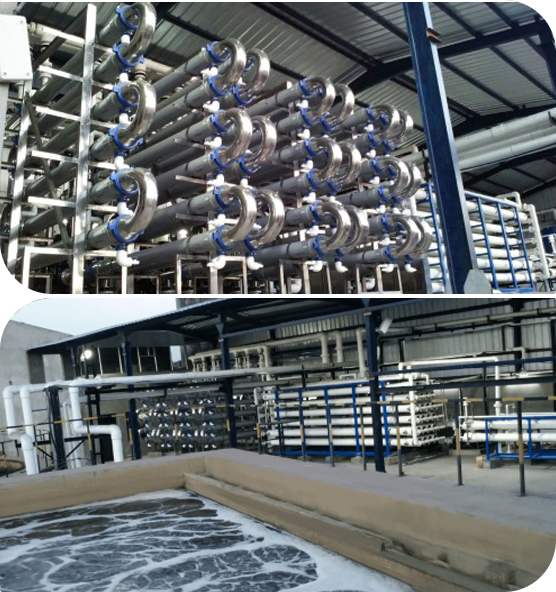
Waterman Engineers Australia is probably the major manufacturers of Zero Liquid Discharge process. A ZLD process is actually a remedy process which happens to be used to remove each of the liquid waste from the procedure. The purpose of ZLD water cure is to scale back wastewater economically and create potable drinking water that is certainly match for regular use. Zero discharge technique is a complicated treatment method that comprises ultrafiltration, reverse osmosis, evaporation and fractional electro deionization. And we are a perfectly-identified provider of ZLD units.
In lots of Industries, for instance ability, oil & gasoline, chemicals, mining and Other people, a great deal of wastewater is generated that must be managed. Conventionally, this discharge of wastewater is finished by way of a plant outfall to the floor drinking water physique like an evaporation pond, or occasionally deep nicely injected. These methods lead to quite a few environmental worries by the public in lots of areas of the entire world, as water is usually a scarce source and its management needs to be monitored. These problems have resulted while in the institution of ZLD procedures by a lot of industries to minimize their environmental footprint and enhance sustainability. And, Waterman Engineers Australia are greatest ZLD suppliers you can find for this system.
Homes OF ZERO LIQUID DISCHARGE SYSTEM
The Homes of a Zero Liquid Discharge technique may vary according to the certain style and design and technology made use of. Nonetheless, some popular Houses of ZLD techniques contain:
Water Conservation: Certainly one of the principal goals of ZLD methods would be to conserve h2o by reducing the discharge of liquid squander into the ecosystem.
High Water Purity: ZLD techniques are made to develop large-good quality drinking water that's no cost from impurities and contaminants, that makes them ideal for use in several industrial procedures.
Versatility: ZLD units are frequently intended to support a wide selection of input liquid streams, which makes them flexible and appropriate for use in various industries.
Sophisticated Wastewater Remedy: Zero liquid discharge devices use Highly developed wastewater treatment method techniques to get rid of impurities and contaminants through the effluent, producing higher-quality drinking water.
Waste Reduction: ZLD programs assist cut down squander by minimizing the volume of liquid waste that should be disposed of and by creating a concentrated, good waste materials that could be properly disposed of.
Energy Efficiency: ZLD devices may be Power-intensive due to significant energy demands of evaporation and other wastewater treatment method processes. Even so, advances in engineering are building Zero liquid discharge devices more Electrical power-successful and price-helpful.
Waterman Engineers Australia manufactures Zero Liquid Discharge (ZLD) units built to get rid of all liquid waste, aiming to create potable drinking water and decrease environmental influence. Their ZLD systems generally contain ultrafiltration, reverse osmosis, evaporation, and fractional electro deionization. Vital technologies made use of are Falling Movie Brine Concentrators, Compelled Circulation Crystallizer, and Other people, using a two-action process of pre-concentration and evaporation/crystallization to Get better Zld System Manufacturer Zero Liquid Discharge System and reuse water. These systems are adaptable to unique industries, emphasizing water conservation, superior h2o purity, waste reduction, and Electricity performance. Specialized technical specs are diversified and customizable, taking into consideration elements like water source, movement rate, and feed water high quality.
The necessity for Zero Liquid Discharge (ZLD) systems occurs from the requirement to address environmental worries relevant to drinking water scarcity and pollution. In industries like power, oil & fuel, and mining, broad amounts of wastewater are generated. Ordinarily, this wastewater is discharged into bodies of water, triggering air pollution and depleting clear water means. ZLD units purpose to attenuate these impacts by managing and recycling wastewater in the industrial course of action, thereby conserving drinking water, lowering squander, and advertising sustainability.
When it comes to the complex technical specs of the Zero Liquid Discharge (ZLD) procedure, essential facets to target include things like the h2o supply it can take care of, the process's move level, the standard of feed h2o, the phases of treatment method concerned, the recovery rate of h2o, solutions for focus disposal, elements of development, working circumstances, and method automation and control. These factors make sure the technique's usefulness, durability, and performance in dealing with and recycling industrial wastewater.
Zero Liquid Discharge (ZLD) plants give Added benefits for example water conservation, squander reduction, and pollution prevention, contributing to environmental sustainability. They're relevant in industries like electric power generation, oil and fuel, chemical substances, and mining, wherever they help in running industrial wastewater properly, decreasing the ecological footprint, and complying with demanding environmental rules. These programs are vital in regions experiencing drinking water scarcity and for industries aiming to enhance their sustainability and operational performance.
FAQs for a Zero Liquid Discharge (ZLD) process frequently tackle its operational concepts, Charge-success, servicing needs, environmental influence, applicability throughout a variety of industries, and regulatory compliance. These questions enable buyers have an understanding of the process's Added benefits, technological needs, and suitability for their specific wastewater administration needs.
1. Zero Liquid Discharge (ZLD) is a wastewater treatment method process designed to eliminate all liquid waste.
two. The process's parts are affected by the precise industrial course of action, wastewater composition, and regulatory specifications.
3. Effluent treatment method crops clear away pollutants from textile effluents to avoid environmental contamination.
4. Rewards include water conservation, pollution reduction, and regulatory compliance.
5. The target is to attenuate environmental influence by recycling water and cutting down squander.
six-9. Effluent procedure crops are levels in wastewater procedure: Principal (Bodily separation), secondary (biological remedy), and tertiary (Innovative cure).
ten. Unit functions include filtration, sedimentation, Organic procedure, and disinfection.
eleven. Limiting parameters are variables that influence the remedy's efficiency, like pH and contaminant focus.
12. Structure considerations involve circulation level, effluent composition, and sought after high quality of addressed drinking water.